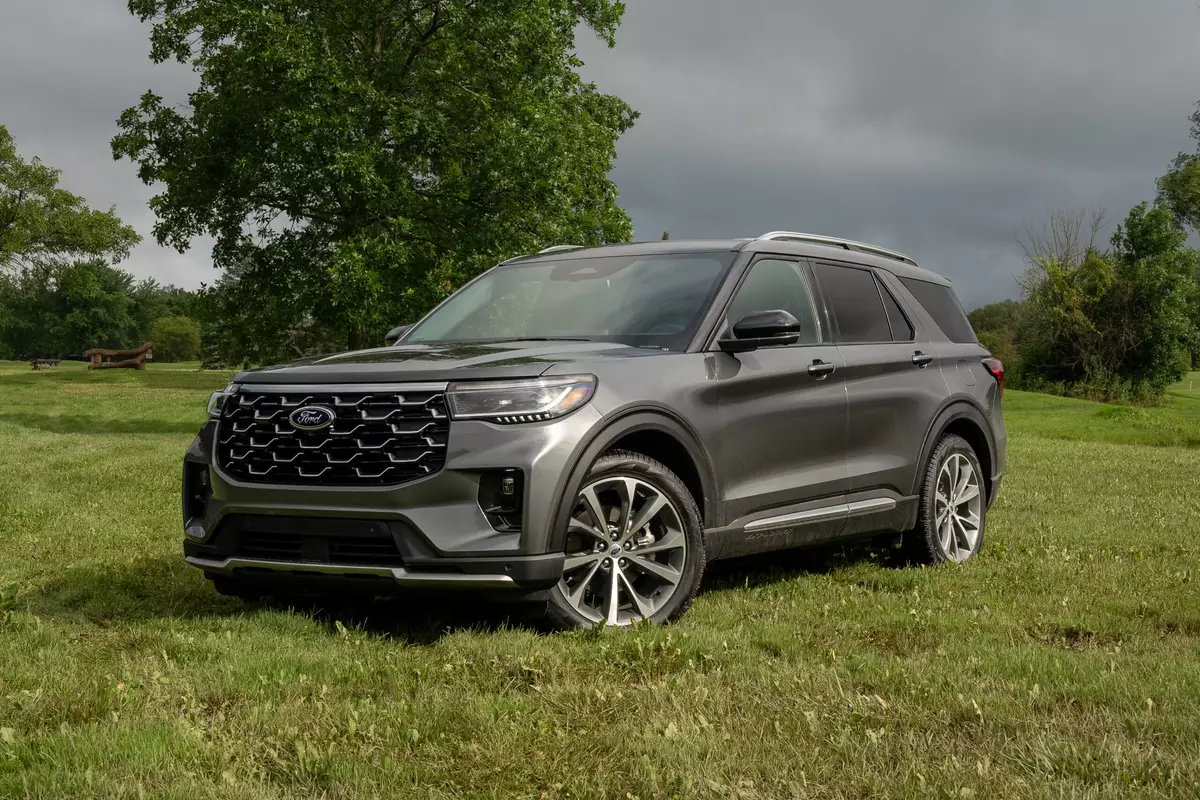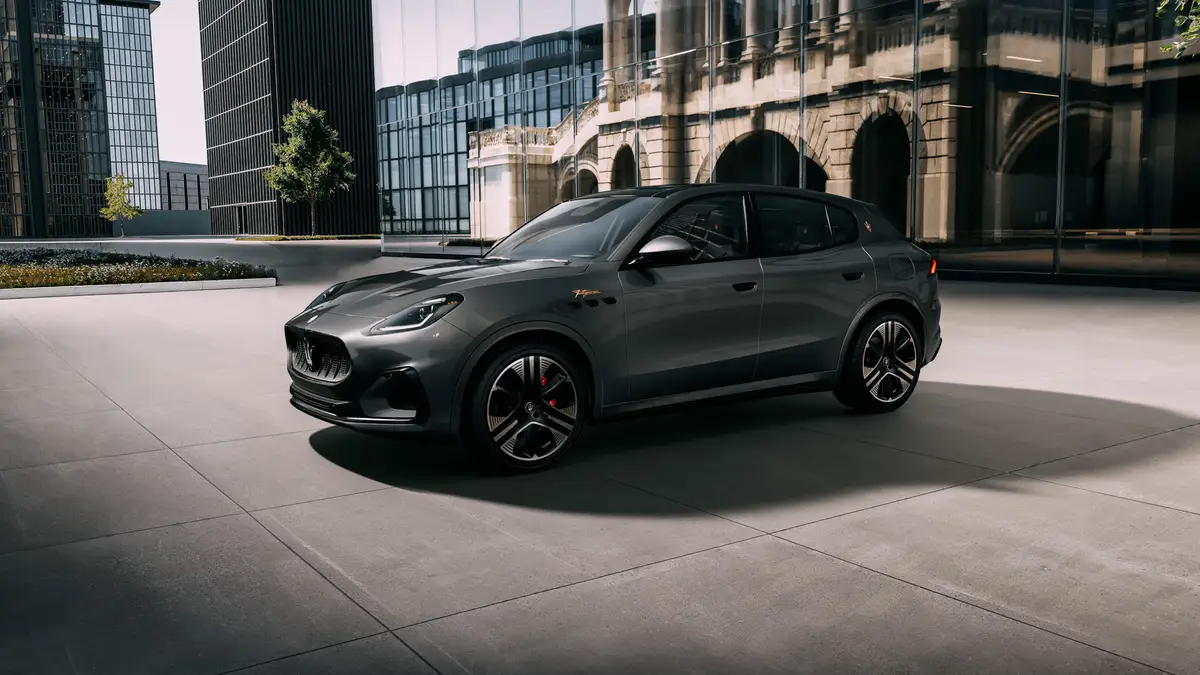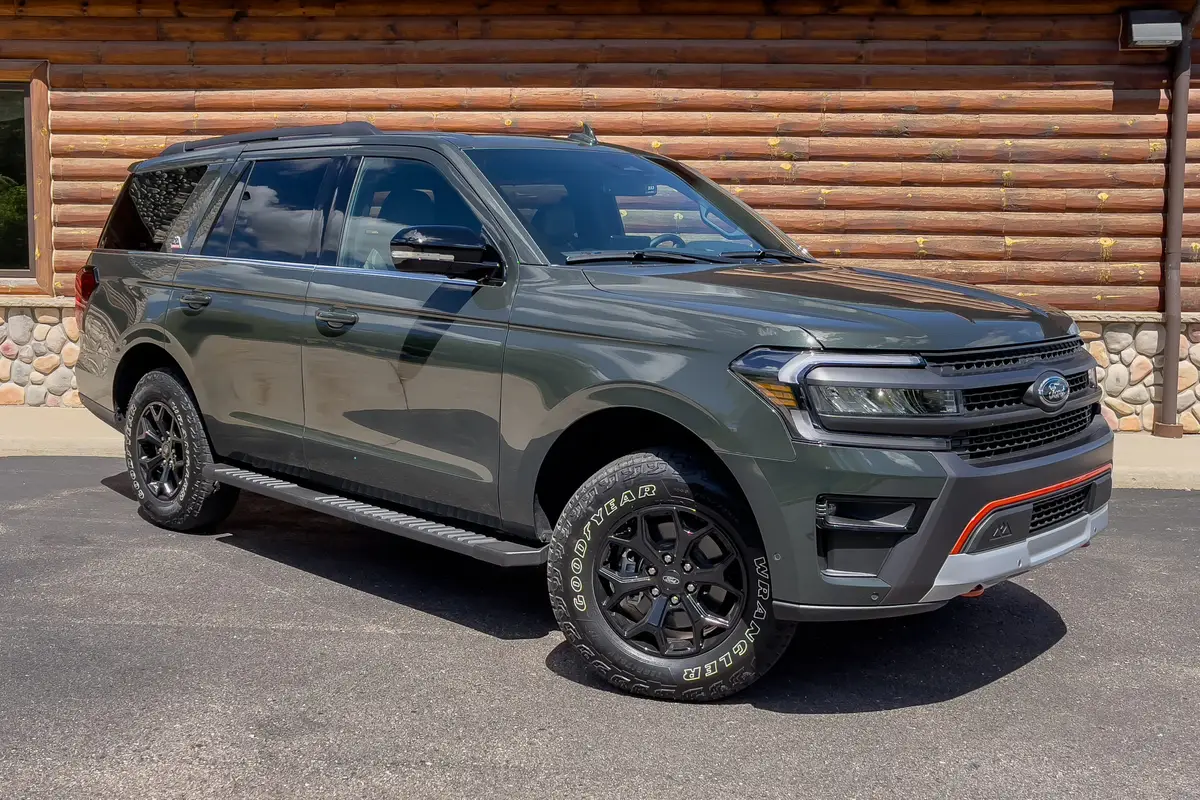PickupTrucks.com's view
Toyota is widely accepted as the greenest auto manufacturer thanks to the breadth, depth and sophistication of its hybrid vehicle lineup. However, Toyota has been stumped by its most thirsty vehicles: its full-size trucks, which the Wall Street Journal reported last year won’t receive hybrid options until 2013 at the earliest. GM, meanwhile, has found a solution for green truck-buyers: The 2009 Chevrolet Silverado Hybrid, which, believe or not, is more fuel-efficient than Toyota Motor Sales’ flagship hybrid car.
A Chevrolet Pickup More Advanced Than Lexus’ Top Sedan?
No, not the smug-emitting Prius, but Toyota’s top-of-the-line Lexus LS 600h L luxury sedan. According to the EPA, the full-size LS 600h is rated at 20/22 mpg city/highway, while the half-ton Silverado Hybrid 2WD crew cab scores a morally superior 21/22 mpg city/highway.
If Toyota’s hybrid hyperbole is to be believed, comparing the Silverado Hybrid to the LS 600h must be the automotive equivalent of “The Beverly Hillbillies,” with GM playing the role of Jed Clampett and Toyota as Milburn Drysdale (and Bob Lutz as Granny – kidding, Bob, kidding!). Lexus markets the upper-crust 600h as a way to “minimize our impact on earth without sacrificing comfort and luxury.” So how’d a simple Chevy pickup wind up better off than a mansion-dwelling Lexus sedan?
You might think we’ve inhaled too much CO2, comparing a Silverado Hybrid to the LS 600h, but it’s really not that silly. GM developed the Silverado’s two-mode hybrid system in cooperation with Lexus’ archrivals, BMW and Mercedes, and will offer it in upcoming versions of its cars and trucks. Chrysler worked on it too, for the 2010 Dodge Ram 1500 and its midsize SUVs.
It’s not far-fetched to say the Silverado Hybrid’s powertrain is more advanced than Lexus’. The Silverado’s two-mode electrically variable transmission houses two 60kW electric motors that can power the truck on their own up to about 25 mph, depending on driving conditions. As the multi-displacement 6.0-liter pushrod V-8 gas engine kicks in, the electric motors seamlessly support it, individually or in tandem, at low and high speeds, helping the engine enter fuel-saving four-cylinder mode sooner and stay in it longer to achieve maximum miles per gallon. The Silverado’s EVT provides an almost infinite range of gears, but it also has four fixed gears, like a conventional automatic transmission, that can be manually selected with the column shifter.
The LS 600h also has two electric motors supplementing its gas engine, but only one is used to drive the car’s wheels; the other starts the V-8 and recharges the batteries. Its continuously variable automatic transmission blends the power of two motors instead of three. Lexus’ 5.0-liter DOHC V-8 only runs with all eight cylinders firing. There is no fuel-saving four-cylinder mode.
The Silverado Hybrid’s mpg story gets even stronger when you compare several other key specs with the LS 600h.
The 5,640-pound Silverado outweighs the LS 600h by about 600 pounds. The Silverado might pick up an extra half or full mpg of mileage if it shed another 300 pounds, like GM’s full-size hybrid SUVs did.
The Lexus’ single-mode hybrid powertrain has a higher net power output of 438 horsepower (389 hp with the V-8 sans motors ) and 385 pounds-feet of torque, versus the Chevrolet’s two-mode net output of 412 hp (332 hp from V-8 only) and 367 pounds-feet of torque.
The LS 600h has a super-slippery drag coefficient of .27, versus the Silverado’s .412 Cd.
Towing 5,000 Pounds
We tried out the Silverado Hybrid with a 5,000-pound, 22-foot Sea Ray boat and double-axle trailer hanging off its back end. The first 30 seconds driving the Silverado were the most incredible of the hour we had it. We thought the truck might sense the boat’s additional weight and start with the gas engine engaged to prevent damage to the hybrid powertrain, but it pulled away with only the golf-cart-like hum of its electric motors, then stayed in full electric mode until almost 15 mph! There was no strain as it did this, just plenty of torque and power. The performance was diesel-like. We barely felt the V-8 kick in as the tach jumped out of auto-stop mode and started registering the gas engine’s RPMs.
What’s amazing is to think how much fuel we saved just getting the combined 11,000-pound mass of the truck and trailer rolling from a dead stop. This is what makes the Silverado Hybrid such a fuel-efficient vehicle in city driving, loaded or not.
Entering the freeway was worry-free and fast – even with the truck’s stout 3.08 rear axle. We had no issue merging with traffic, which was flowing by at 65 to 70 mph. Again, performance was on par with a diesel truck, not gasoline. Electric motor noise intruded into the cabin as we accelerated onto the highway, but it was audibly less intense than some turbos we’ve heard compressing air in heavy-duty oil burners. Unlike most diesel pickups, there was no turbo lag. Torque was immediately available.
“The [hybrid] system has the torque delivery of a diesel,” said Mark Cieslak, GM’s chief engineer for full-size hybrid trucks. “It’s always there for you. That’s how it feels. It pulls like a mule. The other part of it is you don’t get the cadenced shifts like a diesel [when climbing hills]. It’s glass-smooth. The transmission always finds the optimal ratio for you without hunting.”
With extra aerodynamic drag from the boat, the 6.0-liter V-8 stayed in eight-cylinder mode at speeds above 60 mph. This leads us to believe that when GM’s half-ton 4.5-liter V-8 diesels arrive next year, they’ll probably prove to be more efficient for frequent medium- and long-distance towing applications than the Silverado Hybrid.
The biggest negative, compared to conventional diesel-powered and gas pickups, is the Silverado Hybrid’s lowly 6,100-pound maximum tow rating. Heavy-duty pickups can tow two to three times that much, and the 6.0-liter V-8 Silverado half-ton with a six-speed automatic transmission can pull up to 10,700 pounds. Part of the limitation is due to the hybrid’s tall 3.08 rear axle, but it’s mostly thanks to cooling requirements for the truck’s sophisticated electronics. The heavier the trailer, the greater the heat load.
We expect the Silverado Hybrid and future Silverado diesel half-ton to be similarly priced, so it will be critical to think about how and in what environment you’ll use the truck before purchasing either.
Unlike GM’s conventional diesel and gas pickups, the Silverado Hybrid doesn’t have explicit tow/haul mode gear-swapping logic to hold RPMs during acceleration or to help grade-brake during long mountain descents.
“With the electronically variable transmission, you have [the equivalent of] tow/haul mode,” Cieslak said. “It gives you optimal gearing all the time. Grade-braking is the same deal. [The EVT] gives you the benefit of the [automatic] braking that you need. We cadence the hybrid transmission, so if you tap the brake it behaves just like tow/haul mode.”
Reverse is also unconventional. The gas engine doesn’t drive the truck backward, but its electric motors spin backward to move the truck in reverse.
The Silverado Hybrid has three brake systems that work together to slow the truck: standard four-wheel disc brakes, the electric motors in the transmission, and two-stage hydraulic regenerative brakes that use the electric motors to capture and store brake energy in the truck’s batteries while reducing forward momentum. The calibration between the brake systems was perfect – incredibly smooth and imperceptible as they handed off speed-scrubbing responsibilities.
What We’re Thinking
Within the Silverado Hybrid’s operating range, GM has created what we think is the smoothest-operating, most-efficient half-ton pickup available today, though it will take a longer drive to see if its durability is up to its hype. We recently drove a two-mode Chevrolet Tahoe Hybrid that suffered a software glitch that took the braking and stability control systems offline and forced us to swap out for another vehicle. Not good, but from what we understand, GM found and fixed that unique condition.
Assuming the Silverado Hybrid launch happens without further delay or glitches – and the price is right – hard-working owners are certain to be pleased with the truck they’ve bought. They can also grin as they pass LS 600h drivers, knowing their two-mode “Cowboy Cadillac” is more efficient than the higher-profile Lexus hybrid.
Latest news



